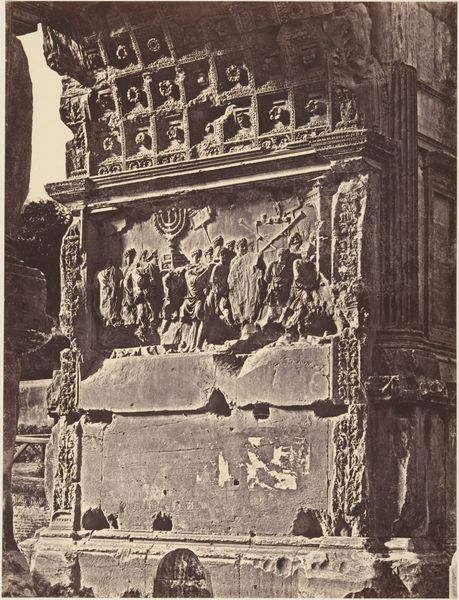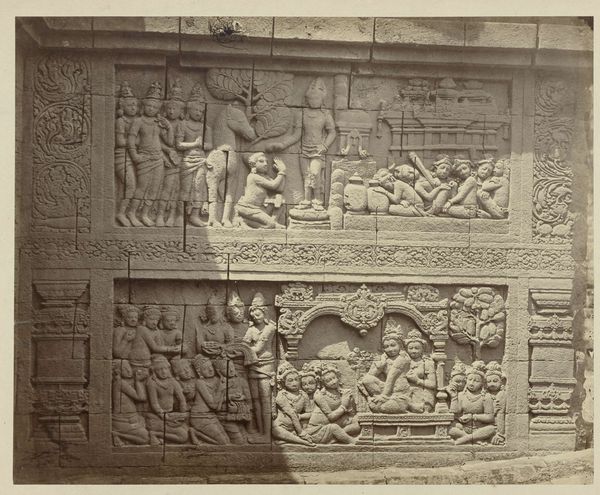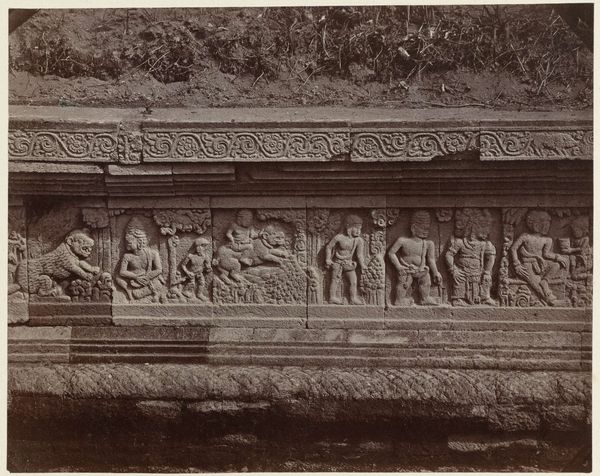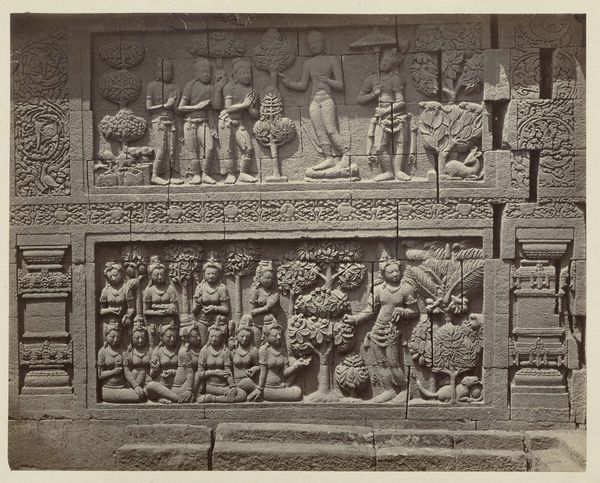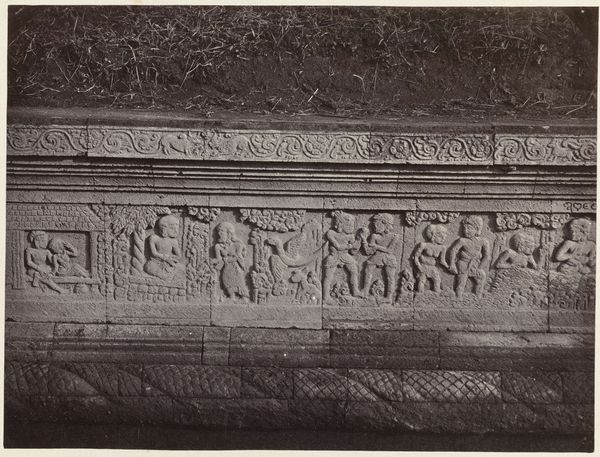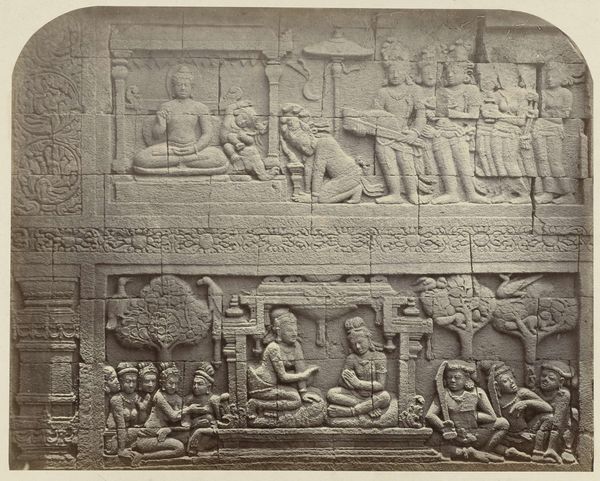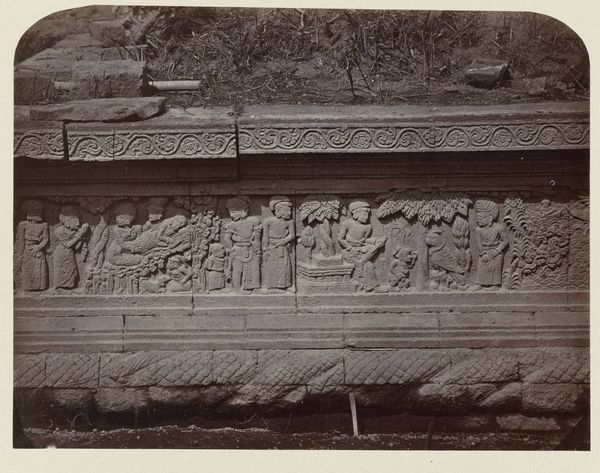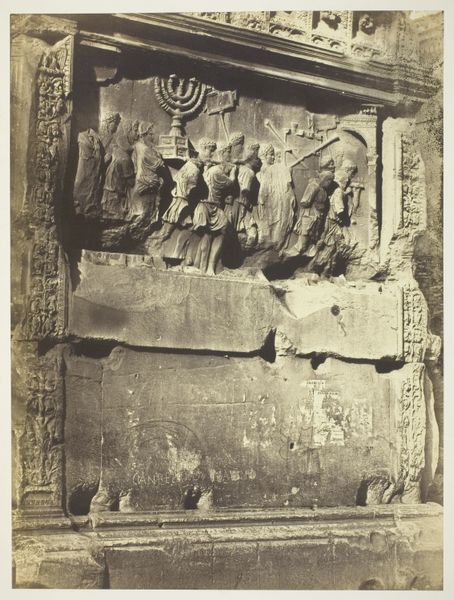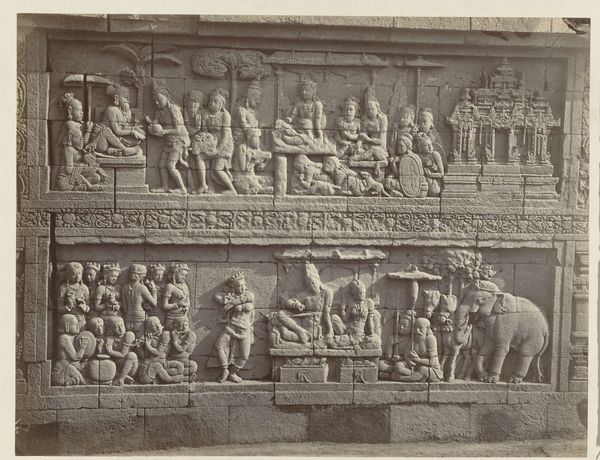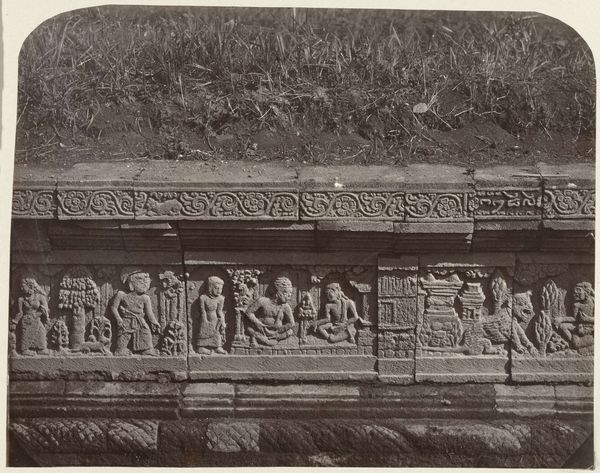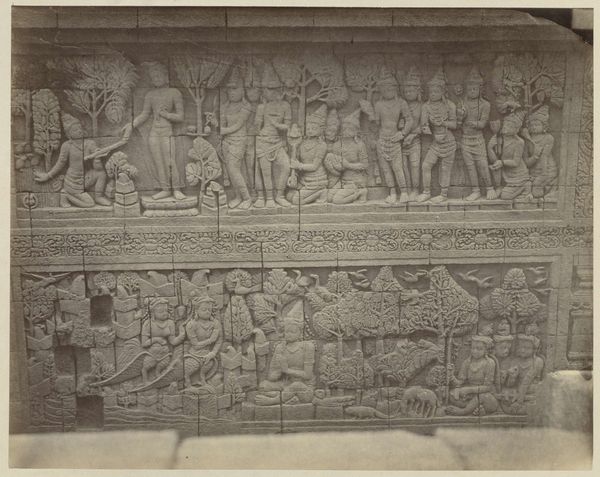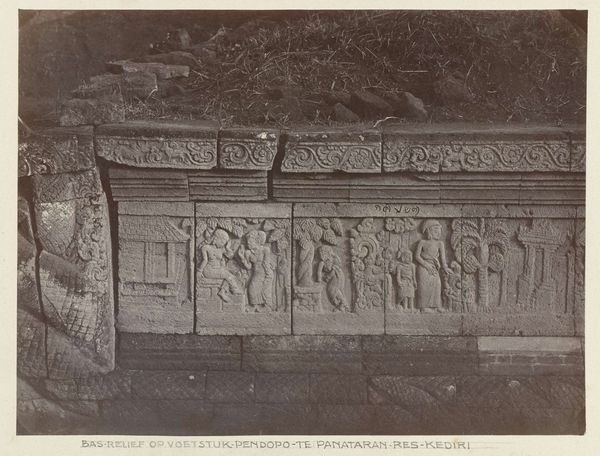
relief, photography, sculpture, gelatin-silver-print, architecture
#
sculpture
#
colourisation
#
relief
#
photography
#
romanesque
#
historical fashion
#
geometric
#
ancient-mediterranean
#
sculpture
#
gelatin-silver-print
#
history-painting
#
architecture
Dimensions: Image: 11 5/16 × 8 5/8 in. (28.8 × 21.9 cm) Sheet: 18 1/2 × 12 1/8 in. (47 × 30.8 cm)
Copyright: Public Domain
Editor: This is Eugène Constant’s gelatin-silver print from around 1848-1852, depicting a section of the "Bassorilievo dell'arco di Tito," or Relief of the Arch of Titus, now held at the Metropolitan Museum. It’s incredible how the textures of the stone are captured in this photograph. What catches your eye about this piece? Curator: I see a fascinating intersection of labor, materiality, and representation. The photograph documents a Roman relief, a product of skilled labor chiseling stone, a material resource extracted and shaped by human hands. Consider the social context: the Arch of Titus commemorated a military victory and served as a powerful tool for imperial propaganda. Editor: So you are looking at both the original making of the arch and then also how this photograph relates to that? Curator: Precisely. The photograph isn’t simply a neutral record; it's a *re*presentation filtered through the photographer’s lens and the technical processes of the mid-19th century. It also involves labour: the photographer's skill in capturing the light, the darkroom work, the use of materials to create this photographic object. What aspects of its materiality or means of production are you considering? Editor: Well, it’s a photograph of a relief...it seems like the choice of medium emphasizes the historical importance, almost as documentation more than art. But obviously Constant intended something more in taking and printing this. Curator: The “documentation versus art” distinction is useful to interrogate, and, what are the labor dynamics involved? The work memorialized, and Constant's. Both are attempts at capturing a moment. Consider that the very act of photographing elevates the Roman craftsmanship, repurposing it for a new audience. And the choice of gelatin-silver print allows for the sharp detail and tonal range necessary to convey that materiality, don't you think? Editor: That’s a really interesting point; both the relief and this photographic representation rely so heavily on manual processes. It’s making me think about the hierarchies of labor and value at play in both the ancient Roman world and in 19th-century France. Curator: Exactly. By understanding the materials, labor, and social context of both the original relief and its photographic reproduction, we gain a deeper appreciation for the complex layers of meaning embedded in this image.
Comments
No comments
Be the first to comment and join the conversation on the ultimate creative platform.
